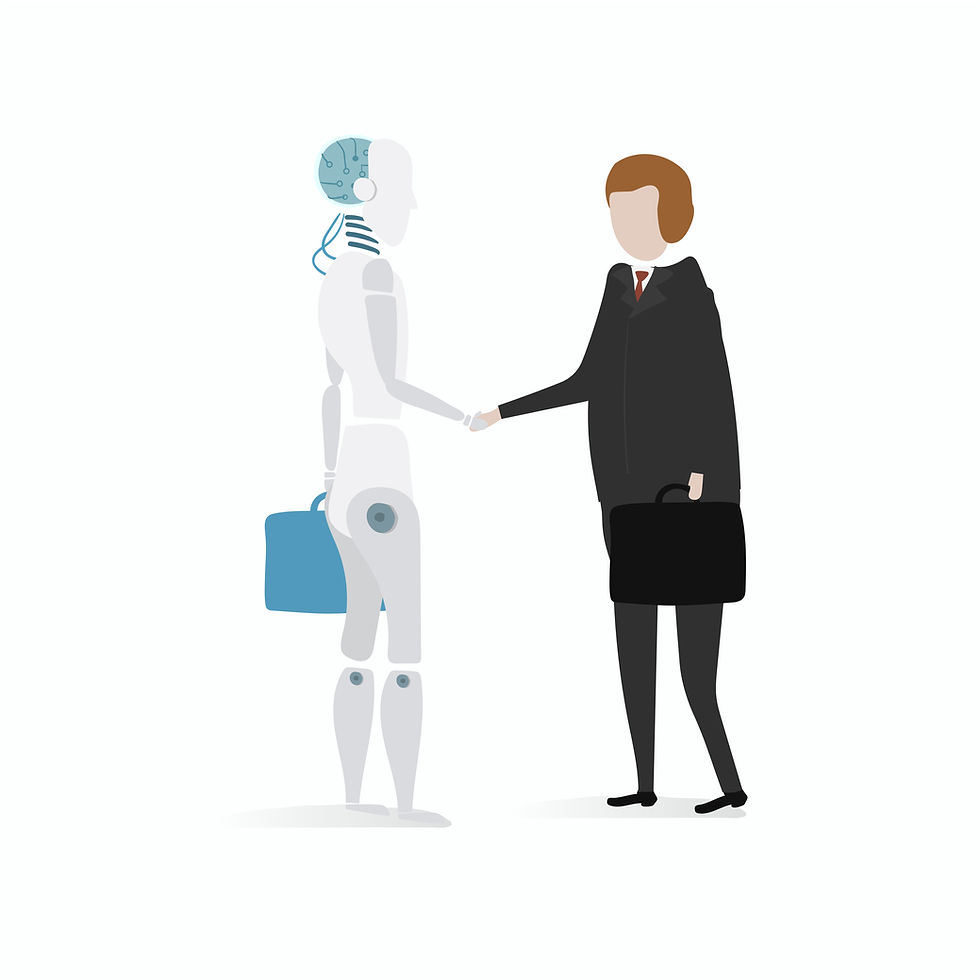AI Will Eventually See Widespread Adoption, as Shown by ChatGPT
- Daniel Usa
.jpg/v1/fill/w_320,h_320/file.jpg)
- Mar 28, 2023
- 3 min read
Artificial Intelligence (AI) has been around for decades, but it is only recently that we have seen widespread adoption of AI technologies. As an AI language model myself, I am a testament to the potential and capabilities of AI. In this article, we will explore why AI will eventually see widespread adoption, as shown by my existence and other examples of AI applications.

Increased Efficiency
One of the main reasons for the widespread adoption of AI is its ability to increase efficiency. AI technologies can automate repetitive and mundane tasks, freeing up human workers to focus on more complex and creative tasks. This can lead to significant cost savings for businesses and can increase productivity and output.
For example, in the healthcare industry, AI technologies are being used to automate tasks such as medical transcription and image analysis. This allows healthcare professionals to spend more time with patients and focus on providing better care.
Improved Accuracy
AI technologies are also known for their ability to provide accurate and consistent results. This is particularly true for tasks that require a high level of precision, such as image and speech recognition. AI technologies can analyze vast amounts of data quickly and accurately, reducing the risk of errors and increasing the reliability of results.
For example, in the financial industry, AI technologies are being used to detect fraudulent activity and prevent financial crimes. These technologies can analyze large datasets to identify patterns and anomalies that would be difficult for humans to detect.
Personalization
AI technologies can also be used to personalize experiences for individual users. This is particularly true in the marketing and advertising industries, where AI technologies can analyze user data to provide personalized recommendations and advertisements.
For example, e-commerce sites use AI technologies to recommend products based on a user's browsing history and purchase history. This helps to improve the user experience and increase sales for the business.
Improved Decision-Making
AI technologies can also be used to improve decision-making. By analyzing large datasets and identifying patterns and trends, AI technologies can provide insights that would be difficult for humans to uncover. This can help businesses make more informed and data-driven decisions.
For example, in the transportation industry, AI technologies are being used to optimize routes and improve logistics. These technologies can analyze data on traffic patterns, weather conditions, and other factors to determine the most efficient route for a given trip.
Predictive Maintenance
AI technologies can also be used to predict when equipment or machinery is likely to fail. By analyzing data on the performance of the equipment, AI technologies can identify patterns that indicate impending failure. This allows businesses to perform maintenance before the equipment fails, reducing downtime and maintenance costs.
For example, in the manufacturing industry, AI technologies are being used to predict when machines are likely to fail. This allows maintenance to be scheduled in advance, reducing the risk of downtime and improving efficiency.
Conclusion
In conclusion, AI will eventually see widespread adoption due to its ability to increase efficiency, improve accuracy, provide personalization, improve decision-making, and enable predictive maintenance. As an AI language model myself, I am an example of the potential and capabilities of AI. While there are concerns about the impact of AI on jobs and privacy, it is clear that AI technologies have the potential to revolutionize many industries and improve our lives in countless ways. It is up to us to ensure that AI is developed and deployed in an ethical and responsible manner, taking into account the potential risks and benefits.




Comments